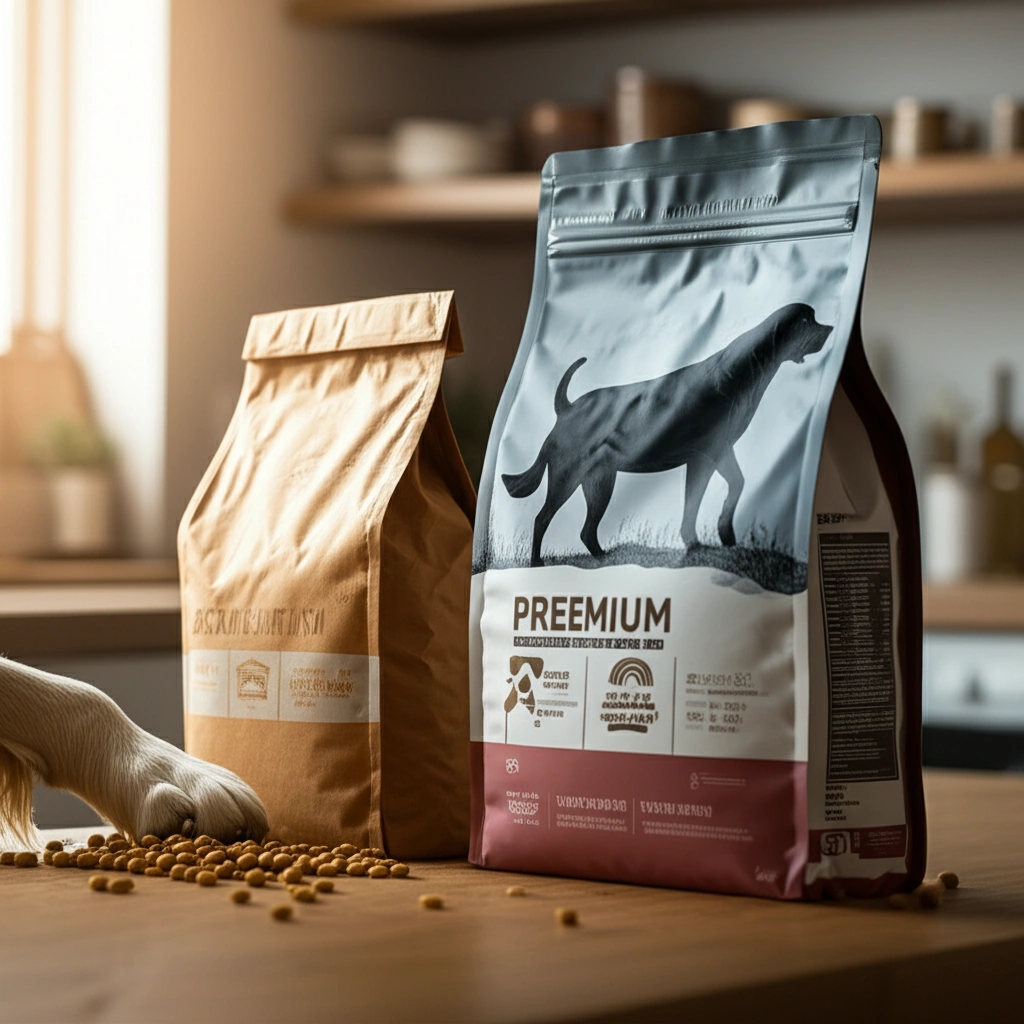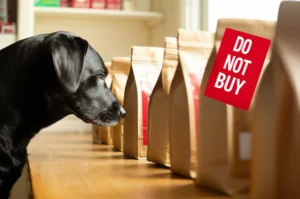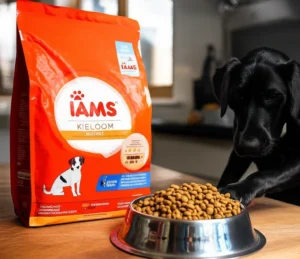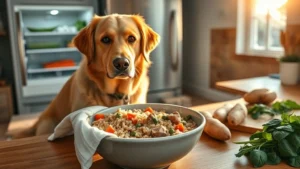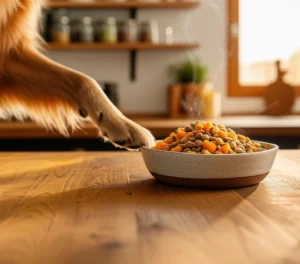Let’s skip the sugarcoated nonsense and answer what you came here for: If you want a healthy, happy pup running circles around your living room, you need to know exactly what you’re putting in their bowl—because not all brands are as “natural” or “premium” as they claim.
You’ve probably noticed: There’s a mind-boggling number of choices out there. Some have shiny packaging and big promises. Others quietly fill the shelves for half the price. But which brands are trusted and wholesome—and which could leave your best friend with more than just an upset tummy? That’s what we’re about to dig into, side by side, no holds barred.
Choosing Matters
You wouldn’t scarf down a bag of mystery meat and candy dyes every day—so let’s not do it to our dogs. The food you choose can literally mean the difference between years of energy and snuggles, or a drawer full of vet bills and restless nights. There’s real joy in seeing your dog with a glossy coat, wagging tail, healthy weight…and sometimes, all it takes is switching up their food.
But, finding the best and worst dog food brands isn’t about picking the fanciest label or the one with a golden retriever on the front. It’s about understanding what makes a food great—or, let’s be honest, what makes it absolute garbage.
How We Rate Dog Food
Full disclosure: this isn’t about “brand loyalty.” It’s about health. When I compare brands for my own dog (a picky eater, professional treat thief, and my best friend), I focus on what matters most. Here’s the yardstick:
- 1. Real ingredients over mystery meat: If the top ingredient is “chicken by-product meal” or just “animal digest,” I run the other way. The best brands are proud to list real meats, whole grains (if they use grains), and actual veggies.
- 2. No nasty additives: Artificial colors, BHA and BHT preservatives, and sweeteners like corn syrup? Hard pass.
- 3. Recalls and transparency: I check if a brand’s been recalled or if they hide where they manufacture. A brand that’s open about testing and sourcing wins big points. Pro tip: independent sites like Dog Food Advisor share detailed reviews you can actually trust [1].
- 4. Specialized needs: Got a senior, a puppy, or a dog with allergies? The best foods consider this, and it’s not always the most expensive bag!
For more in-depth comparisons—by price, nutrition, and recall history, check this table idea out (imagine exploring this in the full guide):
| Brand | Type | Main Protein | First 3 Ingredients | Known Recalls | Pros | Cons | Avg. Price/Day |
|---|---|---|---|---|---|---|---|
| Acana | Dry | Deboned Chicken | Chicken, Chicken Meal, Peas | Rare | High protein, no artificial stuff | Pricey, pea protein | $2.00 |
| Purina Dog Chow | Dry | Corn Gluten Meal | Corn, Meat & Bone Meal, Corn Gluten | Some | Cheap and everywhere | Heavy fillers, vague meats | $0.75 |
| Farmer’s Dog | Fresh | Pork/Chicken/Beef | Pork, Sweet Potato, Potato | Never | Human-grade, custom plans | Needs fridge, pricey | $4.00 |
Now, let’s break down exactly what to look for (and what to avoid!) next time you’re standing in the aisle, overwhelmed.
Red Flags And Green Lights
Here’s how I spot the good, the bad, and the ugly faster than my dog can sniff out a chicken nugget under the couch.
- Meat as the first ingredient = Good. “Meat by-product meal,” “animal digest,” or unnamed “meat meal” = Not good.
- Cheap fillers like corn, wheat middlings, soybean meal at the top? Red flag. While dogs do need some carbs, these ingredients mostly pad profits—not nutrition.
- Artificial colors, flavors, or sweeteners (like propylene glycol, BHA, BHT, or Red 40)? That’s a dealbreaker. These can cause everything from itchy skin to major health problemsaccording to research on poor-quality dog foods.
- Clear sourcing, easy list: The brand tells you not just what’s in the food but where it’s made and why.
Want to keep things simple? If you can’t pronounce half the ingredients and you wouldn’t eat them yourself…why should your dog?
Top Brands: Who Makes The “Best” List?
Navigating the best dog food brands is tricky, especially since every dog is, well, a character. Some need grain-free, others get a rash from chicken. Still, across the reviews, these names show up for quality time and again:
- Acana, Orijen, and Canidae: These guys focus on high protein and real meats, no artificial stuff. They’re favorites in guides like “Top Worst and Best Dog Foods” for their transparency and ingredient quality[2].
- Blue Buffalo: Especially their Life Protection and Wilderness lines, known for avoiding fillers and featuring real meats[2].
- Farmer’s Dog, Ollie, Nom Nom: Modern “fresh food” services making waves for human-grade ingredients and fully tailored meal plans (spoiled, but worth every penny if your wallet can swing it).
- Honest Kitchen and Grandma Lucy’s: Dehydrated and freeze-dried, using only human-grade, often organic ingredients[2].
- Hill’s Science Diet, Royal Canin Dog Food: Vet-trusted, with formulas specifically for medical needs. Yes, they use some grains and byproducts, but their quality control and research-backed recipes often outweigh the cons, especially for dogs with special requirements.
Looking for more on crunchy kibble? I put together a deeper dive here: best dry dog food brands.
Dog Food Brands To Avoid
Oh boy, some names just keep showing up in “worst dog food brands” lists and consumer warnings. If you see these brands, or brands with similar ingredients, just say ‘nope’ and move along:
- Beneful, Alpo, and Ol’ Roy: You might save a few bucks, but it comes at the price of fillers, cheap proteins, and controversial additives[2][3]. Not worth the vet bills later.
- Kibbles ‘n Bits, Dog Chow: High on artificial colors and flavors; heavy on corn and soy. These brands are repeat offenders in the dog food brands to avoid in usa crowd.
- Grain-free without research: Not all grain-free is bad, but some brands just swapped out cheap grains for cheap potato and pea fillers. There have been real concerns about a heart condition called DCM in dogs eating some poorly-formulated “grain-free dog food brands to avoid” (according to findings summarized by Consumer Reports, see “What’s Really in Your Dog’s Food?”[4]).
Some brands sound comforting, folksy, or “all-natural,” but when I’ve checked the label, the first three ingredients are usually corn, animal by-product, and soy. Look up the best dog food brands and compare their ingredient list against the not-so-stellar ones above—you’ll never buy on “brand reputation” alone again.
Understanding “Top 20 Worst Dog Foods List”
Why do certain names always make these lists? Simple: The pattern is cheap carbs, unnamed animal parts, artificial nonsense, and lots of marketing fluff. If you spot things like “animal digest,” or your bag reads like a chemistry set, it’s bad news. Lists published in magazines, watchdog reports, and sites like Dog Food Advisor are filled with these culprits—and the brands rarely change, year to year[1][3].
Switching And Saving — The Real-Life Stuff
Ever tried switching your dog’s food, only to spend a week cleaning up unspeakable messes or listening to dramatic sighs at the food bowl? Here’s what works for us:
- Transition slowly: Mix new food into the old over 7-10 days. Start with 25% new, then 50%, 75%, and so on.
- Watch poop, energy, coat: If your dog’s happier, stools are healthy, and the itching stops, you’re golden. If things go south—give your vet a call.
- Every dog’s different: What’s best for mine might flop for yours. Sometimes you’ll try three brands before hitting the jackpot.
Need to save a little but still want quality? Try mixing a premium kibble with a bit of quality wet food, or use toppers. Bulk buying, auto-ship discounts, and sticking with “boring” flavors (chicken or beef, instead of salmon-quinoa-coconut) can lower costs, too.
Stories From The Bowl
A little story for you: My last dog, Max, used to eat anything. But as he hit his golden years, the “cheap stuff” made him itchy and sluggish—plus, his breath could peel wallpaper. After a ton of research (and probably more anxiety than I’d admit), I switched to a food with real lamb as the first ingredient. Within a month, his coat was shiny and he’d bring me his leash for walks again… and, no more complaints about doggy breath at the park.
Another friend raved about Honest Kitchen’s dehydrated meals after their rescue pup had constant tummy issues. For them, it was all about finding brands transparent with their sourcing, and keeping the formula simple.
Should You Trust Big Vets’ Picks?
Some folks worry about brands like Royal Canin or Hill’s because they aren’t “grain free” or the first ingredient isn’t always chicken. Here’s my honest take: these brands are often the ones your vet pulls out for legitimate medical reasons—whether it’s kidney issues or allergies. Sure, they aren’t “fresh food” or boutique, but they’ve got research, tight manufacturing, and clinical testing behind them. Sometimes, your dog needs science more than trends.
Final Thoughts — For You And Your Best Friend
Finding the perfect food isn’t easy, but you’re already doing what matters most: paying attention, learning, and loving your dog enough to look beyond the marketing fluff. Choose best and worst dog food brands based on honest ingredients, clear sourcing, and how your dog actually feels after eating—let best dog food brands and real-world reviews guide your decision, not just price or hype.
So, what’s in your pup’s bowl right now? Have you tried a game-changing switch, or do you have questions about the next brand on your radar? Share your journey, reach out for advice, compare notes, or double-check a label. At the end of the day, your dog deserves a bowl as amazing as the life they live by your side.
Need more details on which brands are solid for your budget or your super-picky eater? Explore our full guides and lists (like the ones on dog food brands to avoid in usa and best dry dog food brands) and let’s keep those tails wagging!

